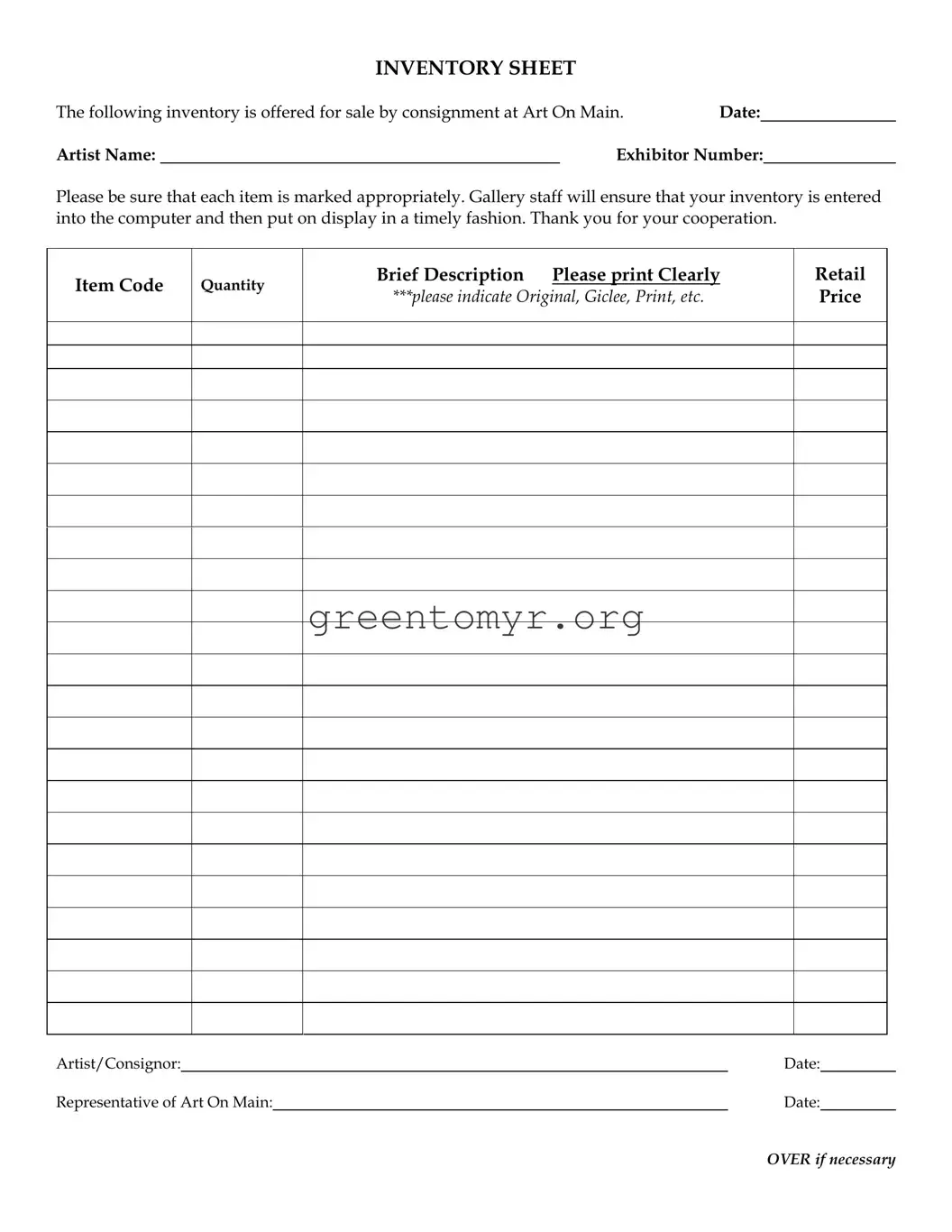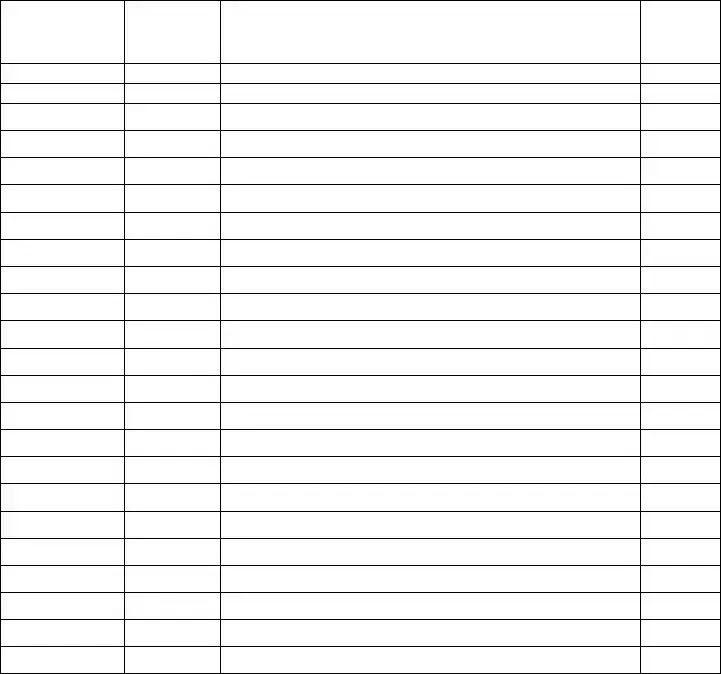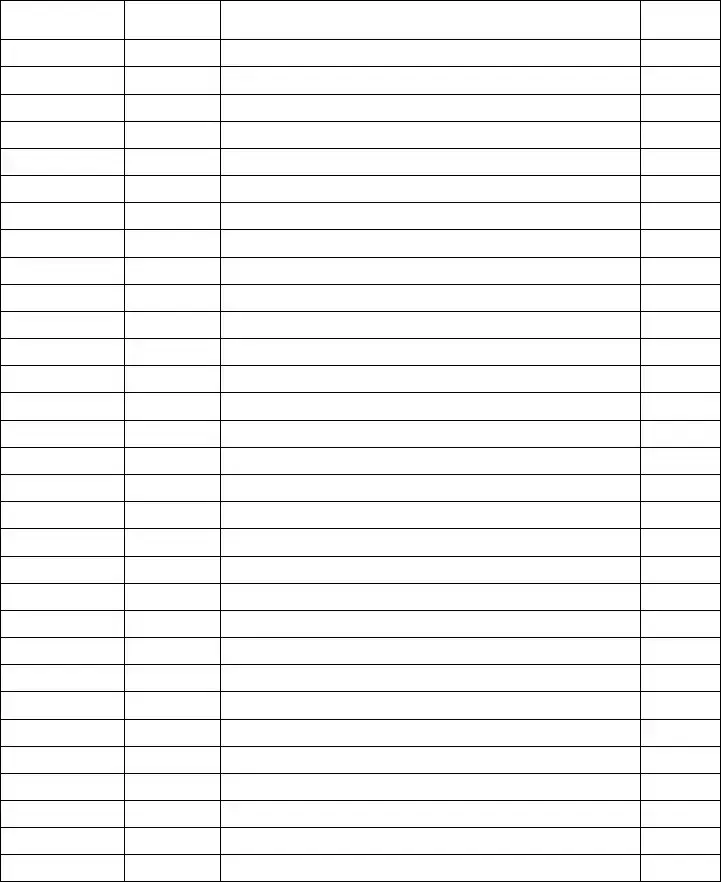The Inventory Sheet form is used by artists and consignors to document the items they are offering for sale at Art On Main. This form helps ensure that all items are accurately recorded, displayed, and managed efficiently by the gallery staff.
How do I fill out the Inventory Sheet?
To fill out the Inventory Sheet, provide the following information:
-
Date
-
Artist Name
-
Exhibitor Number
-
Item Code
-
Quantity
-
Brief Description
-
Retail Price
-
Indicate the type of item (e.g., Original, Giclee, Print, etc.)
Please ensure that your writing is clear, as this will help gallery staff accurately enter your inventory into the system.
If you need additional space, simply continue on the back of the form or attach an additional sheet. Make sure to label any additional sheets so that they can be matched to your original inventory.
After you submit the Inventory Sheet, the gallery staff will enter the information into their computer system. They will also ensure that your items are displayed in a timely manner for potential buyers to see.
Once you submit your Inventory Sheet, changes can be challenging. If you notice any errors or need to update details, contact the gallery staff as soon as possible. They will guide you on how to make necessary adjustments.
What happens if my items do not sell?
If your items do not sell during the exhibition, the gallery will contact you to arrange for their return or discuss other options. It's essential to stay in touch with the gallery team throughout the exhibition period.
Are there any fees associated with using the Inventory Sheet?
The use of the Inventory Sheet itself does not incur fees. However, it’s important to review the gallery’s policies regarding commission rates or any other expenses related to consignment sales.
Do I need to provide a retail price for each item?
Yes, you must provide a retail price for each item listed on the Inventory Sheet. This helps potential buyers understand the value of your artwork and enables gallery staff to manage sales effectively.
If you have any questions or need further assistance regarding the Inventory Sheet, please reach out to the gallery staff directly. They are available to help and ensure a smooth experience for all artists and consignors.


